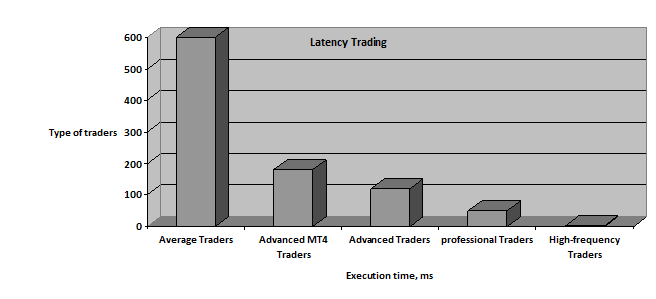Latency: what is it?
First of all, we need to understand what latency is as a concept. In IT lingo, latency is the amount of time it takes for a computer command to be carried out. More precisely, it is the period of time between the input of a command and its execution. Expressed in milliseconds (a millisecond is a thousandth of a second), this is a term that is used widely in trading on the forex market, where it represents the amount of time that it takes for a broker’s server to communicate with a trader’s request.
Why it matters
When it comes to forex trading, latency is critical. Having an edge is essential to making money when trading currencies; to acquire an edge, time is of the essence. Low latency is conducive to profits, high to losses. High latency, for example, might cause slippage, which is the difference between the expected price of an order and the actual price at which the order is executed. This happens due to the gap between the time the order is placed and the time the broker executes it, during which the price might move against you. The higher the latency, the more time it takes for the order to be executed, the greater the likelihood that there will be slippage. While the price is unlikely to move considerably, even movements that are at a fraction of a pip add up over the long term, eating away at your profits and fattening those of your broker.
Another deleterious effect of higher latency is re-quotes and off-quotes, which can be a byproduct of slippage. A re-quote refers to the placement of an order at a price that is different from the one the trader requested; an off-quote refers to the broker’s failure to execute the order altogether – the trader is simply advised that the broker is unable to execute the order at the requested price.
Having low latency will protect the trader from these undesirable consequences of high latency.
You should also bear in mind that the frequency of the tick data flow might vary. It is hard to peg the tick data flow to a definite number; typically, an average of five ticks per second is registered. This translates into an average of one tick every 200 milliseconds.

Traders and slippage – the numbers
- To avoid slippage, you need an execution time of about 4-5 milliseconds. That is the kind of latency that high-frequency traders have, which gives them an edge. You need to have FIX API Account and FIX API Trading Software.
- Professional traders with direct market access (DMA in industry parlance) enjoy an execution time of about 20-40 milliseconds, which typically also means zero slippage on orders.
- Advanced traders with direct market access have an execution time of about 100-120 milliseconds, which results in no slippage on the vast majority of trades.
- Advanced traders using the platform with a modified trading environment typically work with an average execution time of 200-250 milliseconds, which introduces slippage into trading.
- Ordinary traders (for example, those who trade from home using a computer) face much higher average execution times, sometimes as high as 600+ milliseconds. They get the bad end of the deal. Slippage occurs with as much as 50% of all trades placed.
Ditching slippage
While the problem of latency is inevitable, latency itself can be lowered, which will mitigate its effects.


Hemail Talukdar
posted on Thursday, March 12, 2020 8:45:27 PM America/New_York